Comparing Customer Retention and Customer Acquisition Strategies
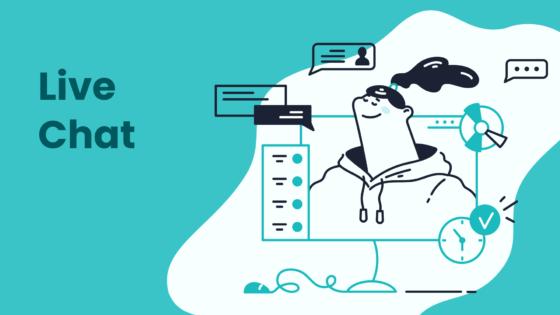
Customer retention focuses on keeping your existing customers engaged, loyal, and satisfied. On the other hand, customer acquisition involves attracting and converting new customers to grow your business. While both are vital, their impact and costs differ significantly. For instance, acquiring a new customer costs up to five times more than retaining one. Additionally, repeat customers spend 67% more than new ones. Tools like Sobot’s solutions can help you balance these strategies effectively. Understanding the nuances of customer retention vs customer acquisition is key to optimizing your business growth.
Understanding Customer Retention vs Customer Acquisition
Definition of Customer Retention
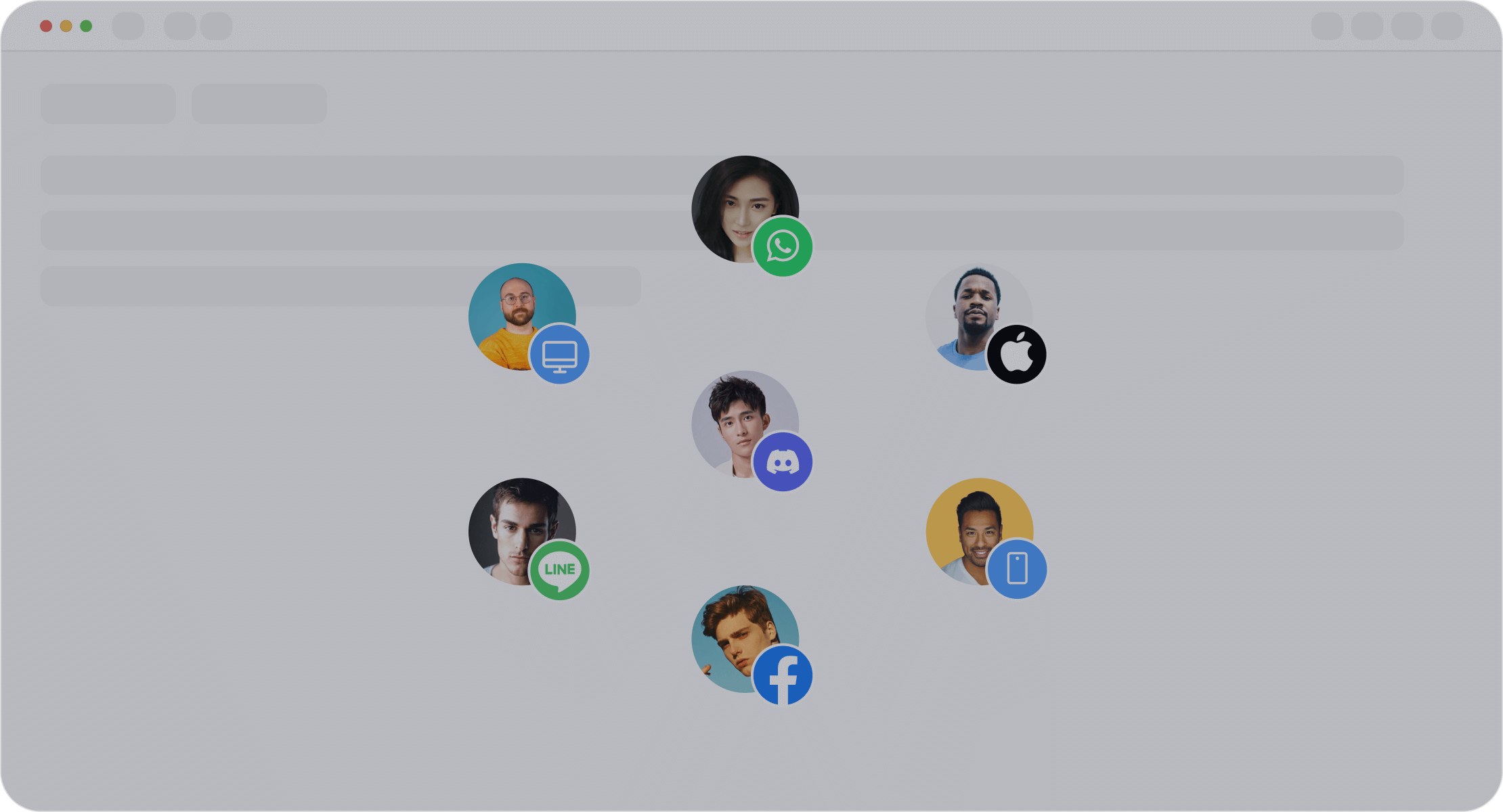
Customer retention refers to the strategies and actions you take to keep your existing customers engaged and loyal to your brand. It focuses on building long-term relationships by ensuring customer satisfaction and delivering consistent value. Retention strategies often include personalized communication, loyalty programs, and excellent customer service. For example, tools like Sobot Live Chat help businesses maintain strong connections with their customers by offering instant support and tailored experiences.
Retention is not just about preventing customers from leaving; it’s about creating advocates for your brand. Studies show that increasing customer retention by just 5% can boost profits by 25% to 95%. Additionally, existing customers tend to spend 31% more than new ones, making retention a cost-effective way to drive revenue.
Definition of Customer Acquisition
Customer acquisition involves attracting and converting new customers to grow your business. This process typically includes marketing campaigns, sales efforts, and onboarding strategies designed to introduce your products or services to potential buyers. For instance, Sobot’s marketing solution enables businesses to create impactful campaigns across multiple channels like WhatsApp, SMS, and voice, helping you reach and convert new customers effectively.
Acquisition strategies often require significant investment. Research indicates that acquiring a new customer can cost five to ten times more than retaining an existing one. Despite the higher costs, acquisition remains essential for expanding your customer base and entering new markets. Tracking metrics like Customer Acquisition Cost (CAC) and conversion rates can help you optimize your efforts and ensure a strong return on investment.
Core Objectives of Retention and Acquisition Strategies
Retention and acquisition strategies serve distinct purposes, but both are crucial for sustainable business growth. Here’s a closer look at their core objectives:
-
Customer Retention:
- Strengthen relationships with existing customers.
- Increase customer lifetime value (CLV) by encouraging repeat purchases.
- Foster brand loyalty and advocacy.
- Reduce churn rates, as approximately 50% of customers may leave within five years.
- Lower costs compared to acquisition, as retaining customers is five times less expensive.
-
Customer Acquisition:
- Attract new customers to expand your market share.
- Build brand recognition and trust, especially for new businesses.
- Drive short-term revenue growth through targeted campaigns.
- Establish a strong foundation for long-term customer relationships.
- Leverage extensive marketing efforts and sales resources to convert leads.
Balancing these objectives is key. While retention focuses on maximizing the value of your current customers, acquisition ensures a steady influx of new ones. Companies that allocate resources wisely and monitor key metrics can achieve a harmonious balance between customer retention and customer acquisition.
Tip: Use tools like Sobot Live Chat to enhance retention by providing personalized support and Sobot’s marketing solution to streamline acquisition efforts. These solutions can help you optimize both strategies for better results.
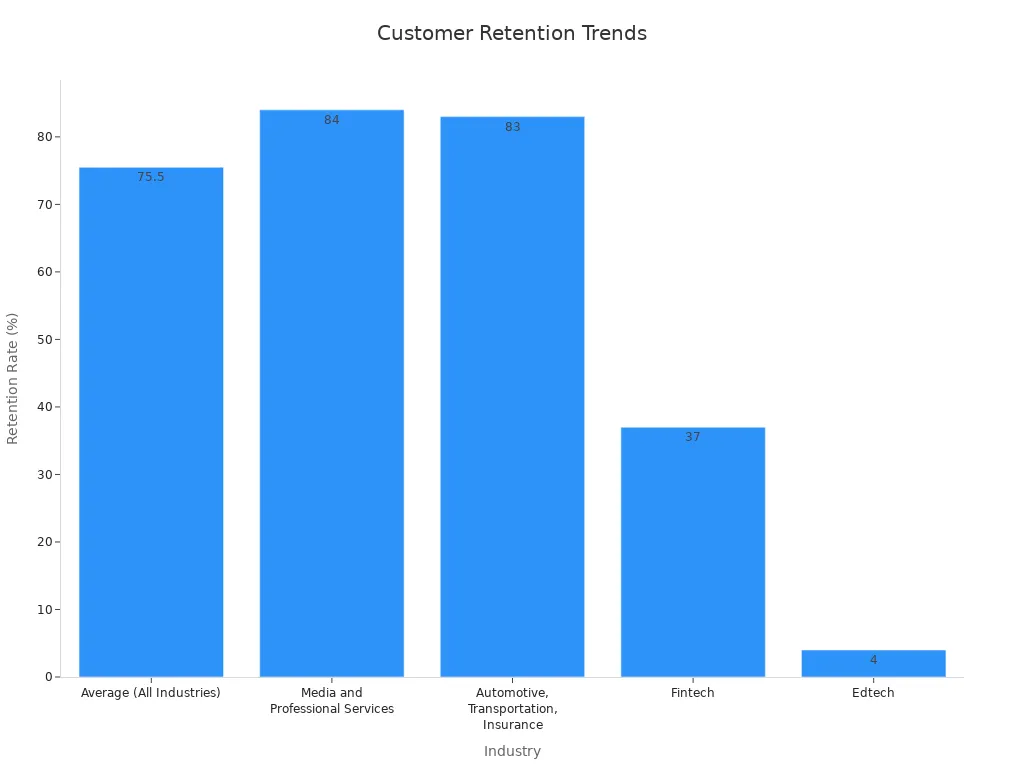
Key Differences Between Customer Retention and Customer Acquisition
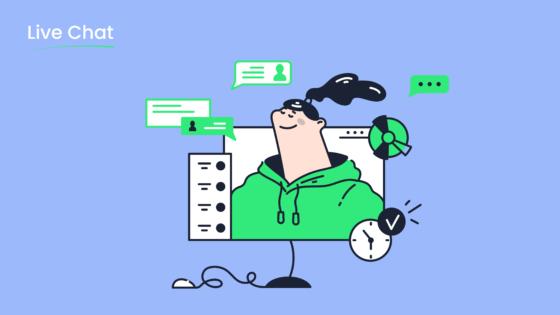
Cost Comparison: Retention vs Acquisition
Customer retention is significantly more cost-effective than customer acquisition. Retaining an existing customer costs five to twenty-five times less than acquiring a new one. This difference stems from the extensive marketing efforts required to attract new customers, such as advertisements, promotions, and onboarding processes. In contrast, retention focuses on maintaining relationships through loyalty programs, personalized communication, and excellent service.
Consider this comparison:
- Repeat customers have a 60-70% chance of making a purchase, while new customers only have a 5-20% chance.
- Around 80% of Americans participate in loyalty programs, increasing repeat purchases by 60%.
Retention strategies also yield higher returns. Increasing retention by just 5% can boost profits by 25% to 95%. As ad costs rise, the ROI for retention becomes even more compelling. Businesses that prioritize retention often see long-term profitability and customer loyalty.
| Metric | Calculation | Example Calculation |
|---|---|---|
| Customer Acquisition Cost | CAC = Total Cost of Acquisition / New Customers Acquired | CAC = $90,000 / 1,000 = $90 |
| Customer Retention Cost | Retention Cost = Total Cost of Retention / Customers Retained | Retention Cost = $100,000 / 2,500 = $40 |
Strategies and Tools for Retention and Acquisition (Including Sobot Live Chat)
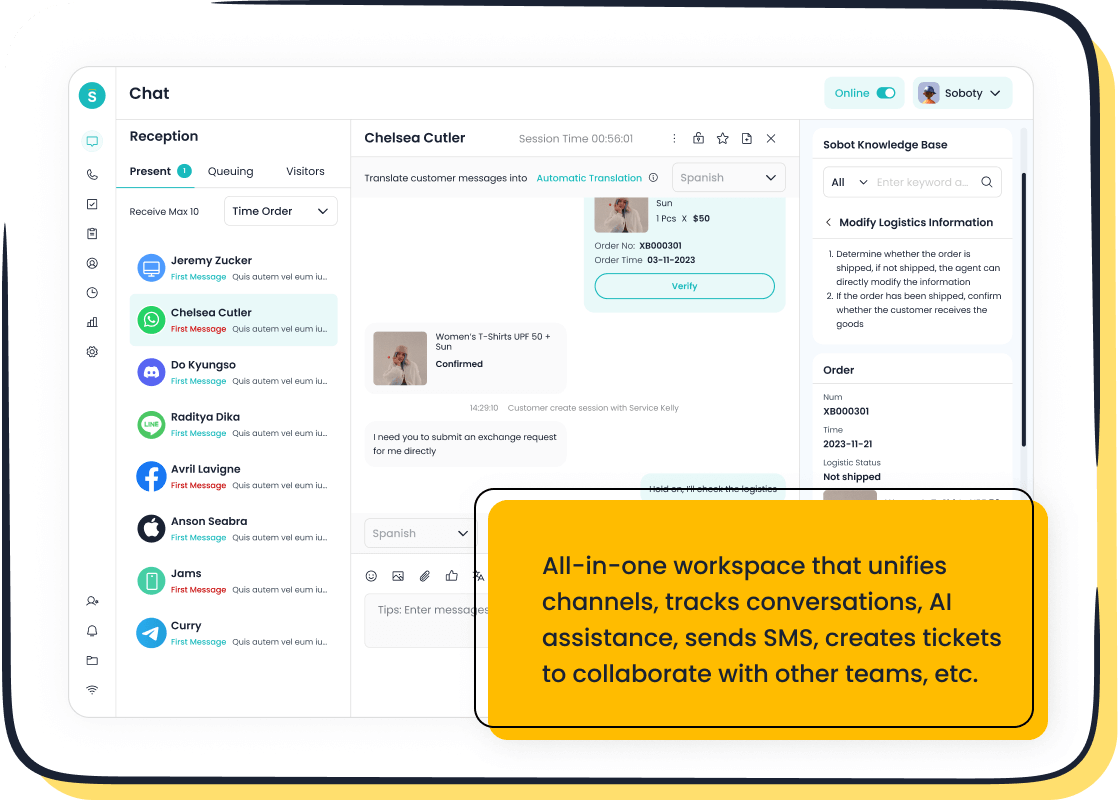
Effective strategies for customer retention and acquisition require tailored approaches and the right tools. Retention strategies focus on building loyalty and trust. Personalized communication, loyalty programs, and instant support are key. Tools like Sobot Live Chat enhance retention by offering omnichannel support, AI-assisted responses, and real-time analytics. These features help businesses deliver seamless customer experiences, fostering loyalty and repeat purchases.
Acquisition strategies aim to attract and convert new customers. Marketing campaigns, targeted offers, and onboarding processes play a crucial role. Sobot’s marketing solution supports acquisition by enabling businesses to create impactful campaigns across channels like WhatsApp, SMS, and voice. Its advanced dashboards track ROI and customer interactions, ensuring efficient resource allocation.
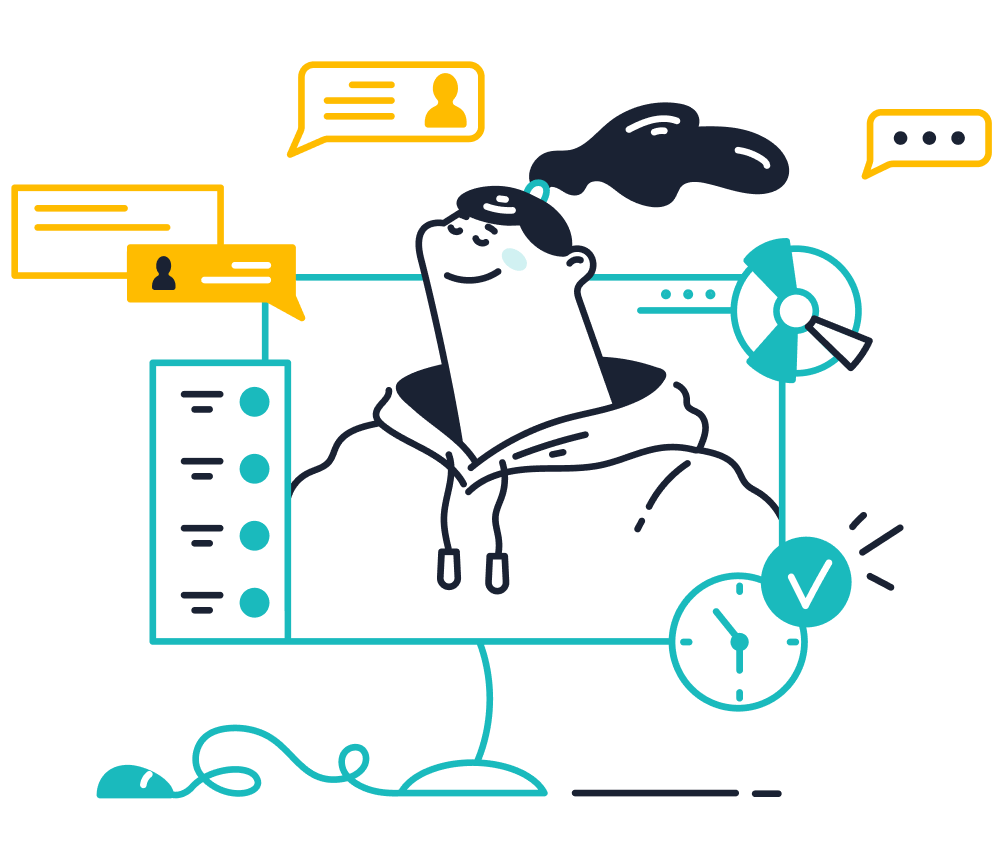
For example, Sobot Live Chat not only boosts retention but also aids acquisition. Its ability to convert visitors into clients through precise profiling and tailored services leads to a 38% gain in conversion rates. By integrating tools like Sobot Live Chat, you can optimize both retention and acquisition efforts.
Metrics to Measure Success in Retention and Acquisition
Tracking the right metrics is essential for evaluating the effectiveness of your retention and acquisition strategies. Retention metrics focus on customer loyalty and engagement, while acquisition metrics measure the efficiency of attracting new customers.
| Metric Name | Description |
|---|---|
| Revenue Churn Rate | Measures the percentage of revenue lost due to customer churn over a specific period. |
| Existing Customer Revenue Growth Rate | Indicates the growth in revenue generated from existing customers, reflecting customer engagement. |
| Customer Retention Rate | Represents the percentage of customers retained over a specific time frame. |
| Repeat Purchase Ratio | Measures how often customers return to make additional purchases. |
| Cumulative Cohort Revenue | Total revenue generated from a group of customers over a set period, useful for assessing customer value. |
Retention success often correlates with metrics like churn rate and repeat purchase ratio. For acquisition, metrics such as CAC and conversion rates are critical. For example, a lower CAC indicates efficient use of resources, while higher conversion rates reflect successful campaigns.
By leveraging tools like Sobot Live Chat and Sobot’s marketing solution, you can monitor these metrics effectively. Built-in analytics and customizable reports provide actionable insights, helping you refine your strategies for better results.
Time Frame and Impact on Profitability
The time frame for achieving results differs significantly between customer retention and customer acquisition strategies. Retention strategies often yield quicker returns because they focus on customers who already know your brand. These customers require less convincing to make repeat purchases. For example, loyalty programs or personalized offers can immediately encourage existing customers to buy again, boosting your revenue in a shorter period.
Acquisition strategies, on the other hand, usually take longer to show results. Attracting new customers involves multiple steps, including raising awareness, building trust, and converting leads into buyers. This process requires time and consistent effort. Marketing campaigns, onboarding processes, and promotional offers all contribute to the extended timeline. However, once you successfully acquire new customers, they can become long-term assets for your business.
Profitability also varies between these strategies. Customer retention tends to have a more immediate and significant impact on your bottom line. Retained customers are more likely to make repeat purchases, spend more per transaction, and refer others to your business. Studies show that increasing customer retention by just 5% can boost profits by up to 95%. Additionally, retention strategies are cost-effective. They require fewer resources compared to the high costs of acquiring new customers.
In contrast, customer acquisition often involves higher upfront costs. Advertising, promotions, and sales efforts can quickly add up. For example, acquiring a new customer can cost five to ten times more than retaining an existing one. While acquisition strategies are essential for growth, their profitability depends on how effectively you convert new customers into loyal ones. Businesses that fail to retain newly acquired customers may struggle to recover their initial investment.
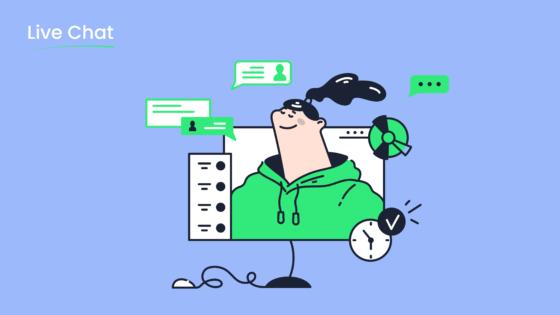
Balancing these strategies is crucial for sustainable growth. Retention offers a faster return on investment and enhances profitability, while acquisition ensures a steady flow of new customers to expand your market share. Tools like Sobot Live Chat can help you achieve this balance. By fostering loyalty among existing customers and converting new visitors into clients, you can maximize both short-term and long-term profitability.
Tip: Focus on retention to drive immediate profits while using acquisition to secure future growth. Combining these approaches ensures a stable and profitable business model.
Benefits and Challenges of Customer Retention vs Customer Acquisition
Advantages of Customer Retention Strategies
Customer retention offers several advantages that directly impact your business growth. Retained customers provide a stable revenue base, allowing you to forecast sales more accurately. A strong retention strategy can also lead to profit growth. For instance, increasing retention by just 5% can boost profits by 25% to 95%. Repeat purchases and higher transaction volumes from loyal customers drive this growth.
Retention is also cost-effective. Retaining customers costs significantly less than acquiring new ones, optimizing your marketing budget. Additionally, loyal customers often share valuable feedback, helping you refine your products and services. Their insights act as a testing ground for new offerings, ensuring better market readiness.
| Advantage | Description |
|---|---|
| Profit Growth | A 5% increase in retention can lead to profit growth of 25-95%. |
| Stability | Retained customers provide a stable revenue base during market volatility. |
| Predictability | Repeat purchases ensure predictable revenue streams. |
| Cost-Effectiveness | Retention reduces marketing expenses compared to acquisition. |
| Insights for Development | Feedback from loyal customers aids product refinement. |
Tip: Focus on customer satisfaction to strengthen retention. Tools like Sobot Live Chat can help you deliver personalized support and build lasting relationships.
Advantages of Customer Acquisition Strategies
Customer acquisition plays a vital role in expanding your market share and driving growth. It allows you to attract new customers, build brand recognition, and increase competitiveness. By understanding customer preferences and behaviors, you can create targeted campaigns that improve efficiency and reduce waste.
Acquisition strategies also enhance your ability to make data-driven decisions. For example, Walmart’s eCommerce platform achieved a 30% increase in new sign-ups through personalized shopping experiences. Similarly, personalized recommendations led to 20% higher conversion rates. These approaches demonstrate how acquisition can boost short-term revenue while laying the foundation for long-term success.
- Improved targeting through data understanding.
- Increased efficiency by reducing waste in acquisition efforts.
- Better understanding of customer preferences and behaviors.
- Increased competitiveness in the market.
- Data-driven decision making to enhance success rates.
Note: Use tools like Sobot’s marketing solution to streamline acquisition efforts. Its advanced dashboards and multichannel support can help you attract and convert new customers effectively.
Challenges in Implementing Retention Strategies
Retention strategies come with their own set of challenges. Maintaining customer satisfaction requires consistent effort and resources. You need to deliver personalized experiences, which can be time-consuming and complex. Additionally, managing customer retention cost effectively is crucial. While retention is cheaper than acquisition, it still demands investment in loyalty programs, customer service, and communication tools.
Another challenge is reducing churn rates. Approximately 50% of customers may leave within five years, making it essential to identify and address their concerns proactively. Predictable revenue depends on your ability to keep customers engaged and loyal.
The rising average customer acquisition cost across industries further emphasizes the importance of efficient retention strategies. By focusing on retention, you can achieve better financial outcomes and build a loyal customer base.
Tip: Tools like Sobot Live Chat simplify retention efforts by offering omnichannel support and AI-assisted responses. These features help you maintain strong connections with your customers while reducing churn.
Challenges in Implementing Acquisition Strategies
Customer acquisition presents unique challenges that require careful planning and execution. One of the biggest hurdles is managing the high customer acquisition cost. Attracting new customers often involves significant spending on advertising, promotions, and sales efforts. These expenses can strain your budget, especially if the return on investment (ROI) is not immediately evident. You need to monitor your spending closely to ensure that your campaigns deliver measurable results.
Another challenge is standing out in a crowded market. Many businesses compete for the attention of the same audience. Differentiating your brand requires creative strategies and compelling messaging. Without a clear value proposition, potential customers may overlook your offerings. You must focus on understanding your audience’s needs and preferences to create campaigns that resonate.
Building trust with new customers also takes time. Unlike existing customers, new ones may hesitate to engage with your brand. They need assurance that your products or services will meet their expectations. Providing transparent information and showcasing customer reviews can help you establish credibility. However, this process often requires consistent effort and patience.
Tracking the effectiveness of acquisition strategies can be complex. Metrics like conversion rates and customer acquisition cost are essential, but interpreting them correctly requires expertise. You need tools that simplify data analysis and provide actionable insights. For example, Sobot’s marketing solution offers advanced dashboards to help you measure campaign performance and optimize your efforts.
Tip: Focus on creating personalized experiences to boost customer satisfaction. Tailored campaigns can improve engagement and reduce acquisition costs over time.
Balancing Customer Retention and Customer Acquisition for Business Success
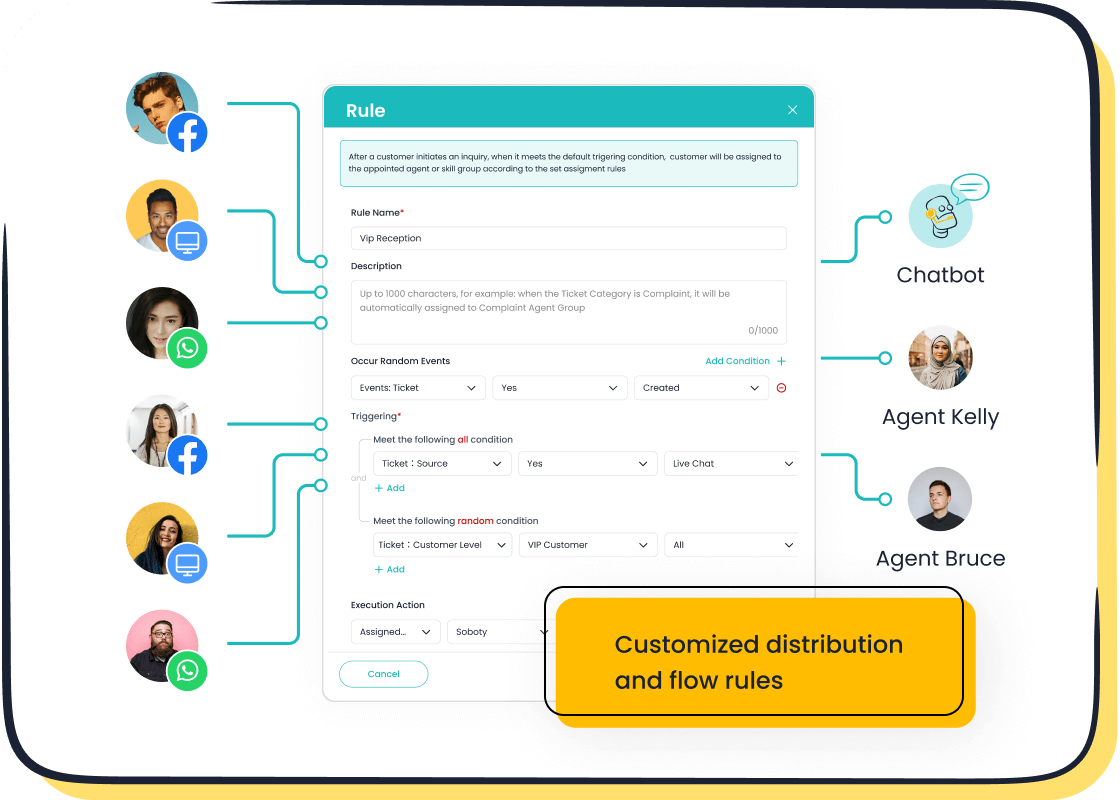
Factors to Consider When Allocating Resources
Balancing customer retention and acquisition requires careful resource allocation. You need to evaluate the cost-effectiveness of each strategy. Retention often delivers higher returns, as loyal customers spend 67% more than new ones. Additionally, 65% of a company’s business comes from existing customers. Retention strategies, such as loyalty programs and personalized communication, typically involve lower costs compared to acquisition efforts like advertising and promotions.
However, acquisition remains essential for growth. Attracting new customers expands your market share and ensures long-term sustainability. To allocate resources effectively, segment your audience. Identify long-term loyal customers and invest in their satisfaction. Simultaneously, allocate funds to targeted campaigns that attract high-value prospects. Tools like Sobot Live Chat can help you manage both efforts by fostering loyalty and converting new visitors into clients.
Aligning Strategies with Business Goals
Your customer strategies should align with your overarching business objectives. For example, if your goal is to increase profitability, focus on retention. Studies show that increasing customer retention by 5% can boost profits by 25-95%. On the other hand, if your aim is to enter new markets, prioritize acquisition to build brand recognition.
Understanding customer objectives is also crucial. When you align customer outcomes with your goals, you create a win-win scenario. For instance, evidence-based marketing uses customer research to validate product performance. This approach ensures that your strategies resonate with your audience while supporting your business’s financial success. Tools like Sobot’s marketing solution provide advanced analytics to help you tailor your efforts and achieve alignment.
Pro Tip: Regularly review your strategies to ensure they remain aligned with your evolving business goals and market conditions.
How Sobot’s Solutions Support Balanced Strategies
Sobot’s solutions empower you to balance retention and acquisition effectively. For instance, Sobot Live Chat enhances customer loyalty by offering omnichannel support and AI-assisted tools. These features improve customer satisfaction and reduce churn. Additionally, its ability to convert visitors into clients through precise profiling supports acquisition efforts.
Sobot’s marketing solution complements this by enabling impactful campaigns across channels like WhatsApp and SMS. Advanced dashboards provide insights into ROI and customer interactions, helping you optimize resource allocation. Case studies highlight the effectiveness of these solutions. For example, Sobot’s intelligent platform achieved a 95% customer satisfaction rate and improved service for VIP customers. Another implementation reduced inbound discussion volume by 20% while increasing positive feedback to over 96%.
By integrating Sobot’s tools, you can streamline your strategies, enhance customer experiences, and drive sustainable growth.
Practical Tips for Implementing Retention and Acquisition Strategies
Tips for Strengthening Customer Retention (Using Sobot Live Chat)
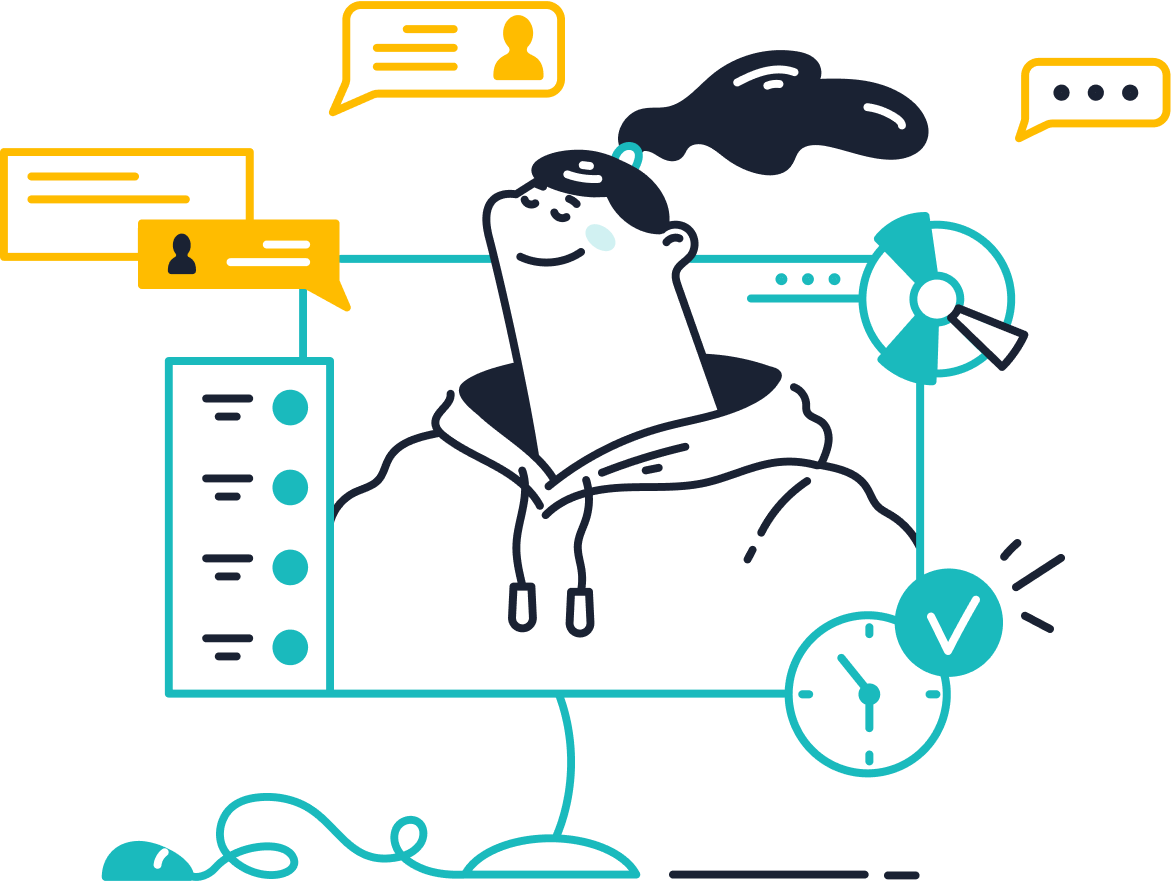
Strengthening customer retention requires a focus on personalized experiences and proactive support. Tools like Sobot Live Chat can help you achieve this by offering omnichannel support and AI-assisted responses. These features ensure timely and efficient communication, which enhances customer satisfaction. For example, OPPO used Sobot’s solutions to achieve a 57% increase in repurchase rates by improving service efficiency and integrating customer data.
Here are some actionable tips:
- Leverage Automation: Use live chat bots to handle repetitive queries, freeing up agents for complex issues.
- Provide Proactive Support: Reach out to customers before they encounter problems. Fabindia’s use of WhatsApp for proactive customer service is a great example.
- Focus on Personalization: Segment your audience and tailor your communication. Netflix’s content recommendations based on viewing history demonstrate the power of personalization.
- Deliver Excellent Service: Ensure your team is trained to resolve issues quickly and effectively. Zappos’ 24/7 support and hassle-free returns have set a benchmark in customer service.
By implementing these strategies, you can reduce churn and increase customer lifetime value.
Tips for Enhancing Customer Acquisition
Customer acquisition requires innovative approaches to attract and convert new customers. A well-rounded marketing strategy can help you achieve this. Sobot’s marketing solution supports acquisition by enabling impactful campaigns across channels like WhatsApp and SMS. Its advanced dashboards provide insights into ROI, helping you optimize your efforts.
Consider these tips:
- Utilize Referral Marketing: Encourage existing customers to refer others. Referral channels often have a cost per acquisition of just $1-$9, making them highly cost-effective.
- Invest in Email Marketing: Personalized email campaigns can generate a median ROI of 122%.
- Adopt Targeted Marketing: Use data analytics to understand customer preferences and create tailored campaigns. Sweaty Betty reduced its cost per acquisition by 75% through targeted strategies.
- Offer Incentives: Discounts or rewards can motivate potential customers to try your products or services.
These tactics can help you attract high-value customers while keeping acquisition costs manageable.
Tools and Technologies to Support Both Strategies
Technology plays a crucial role in balancing retention and acquisition. Tools like Sobot Live Chat and Sobot’s marketing solution provide the functionality you need to excel in both areas.
- CRM Systems: Organize customer data to enable personalized interactions and improve loyalty.
- Analytical Tools: Evaluate customer patterns to tailor services and enhance satisfaction.
- Automation Technologies: Streamline routine tasks, allowing your team to focus on meaningful customer interactions.
- Omnichannel Platforms: Engage customers across multiple channels for a seamless experience. Sobot Live Chat supports platforms like WhatsApp, Facebook, and Instagram, ensuring no missed opportunities.
By integrating these tools, you can reduce customer retention cost while improving acquisition efficiency.
Customer retention and acquisition differ in cost, ROI, and selling probability. Retention costs less and offers a 60-70% chance of selling to existing customers, while acquisition costs five times more with only a 5-20% chance of converting new ones.
| Aspect | Customer Acquisition | Customer Retention |
|---|---|---|
| Cost | 5 times more expensive than retention | Less expensive than acquisition |
| Probability of Selling | 5-20% to new customers | 60-70% to existing customers |
| ROI | Lower ROI for acquisition | Higher ROI for retention |
Balancing both strategies ensures sustainable growth. Focus on retention for higher ROI and acquisition to expand your market. Evaluate metrics like Customer Lifetime Value (CLV) and Customer Acquisition Cost (CAC) to prioritize efforts effectively.
| Metric | Description |
|---|---|
| Customer Acquisition Cost | Total marketing, sales, and advertising costs divided by new customers gained |
| Lower CAC | Indicates efficient acquisition efforts |
Tip: Use tools like Sobot Live Chat to enhance retention and Sobot’s marketing solution to streamline acquisition.
FAQ
What is the best way to balance customer retention and acquisition?
You should allocate resources based on your business goals. Retention strategies work well for boosting profits, while acquisition helps expand your market. Tools like Sobot Live Chat improve retention by fostering loyalty, and Sobot’s marketing solution streamlines acquisition with targeted campaigns.
How can Sobot Live Chat help with customer retention?
Sobot Live Chat enhances retention by offering instant support and personalized experiences. Its AI-assisted tools and omnichannel capabilities ensure seamless communication, which keeps customers satisfied and loyal. You can also use its analytics to identify trends and improve service quality.
Why is customer acquisition more expensive than retention?
Acquisition involves attracting new customers through ads, promotions, and onboarding, which require significant investment. Retention focuses on maintaining relationships with existing customers, making it more cost-effective. For example, retaining customers costs five times less than acquiring new ones.
What metrics should you track for retention and acquisition?
For retention, monitor churn rate, repeat purchase ratio, and customer lifetime value. For acquisition, focus on customer acquisition cost (CAC) and conversion rates. Sobot’s tools provide built-in analytics to help you track these metrics effectively.
Can one strategy work without the other?
No, both strategies are essential. Retention ensures long-term profitability, while acquisition brings in new customers to sustain growth. Combining both creates a balanced approach. Sobot’s solutions support this by enhancing retention and driving acquisition simultaneously.
See Also
Comparative Analysis of Leading Customer Feedback Tools
Comparing Genesis Call Center and Genesys Solutions
Excelling at Live Chat for Retail Businesses
Effective Strategies for Quality Management in Call Centers
Enhancing SaaS Customer Support Through Live Chat Techniques
